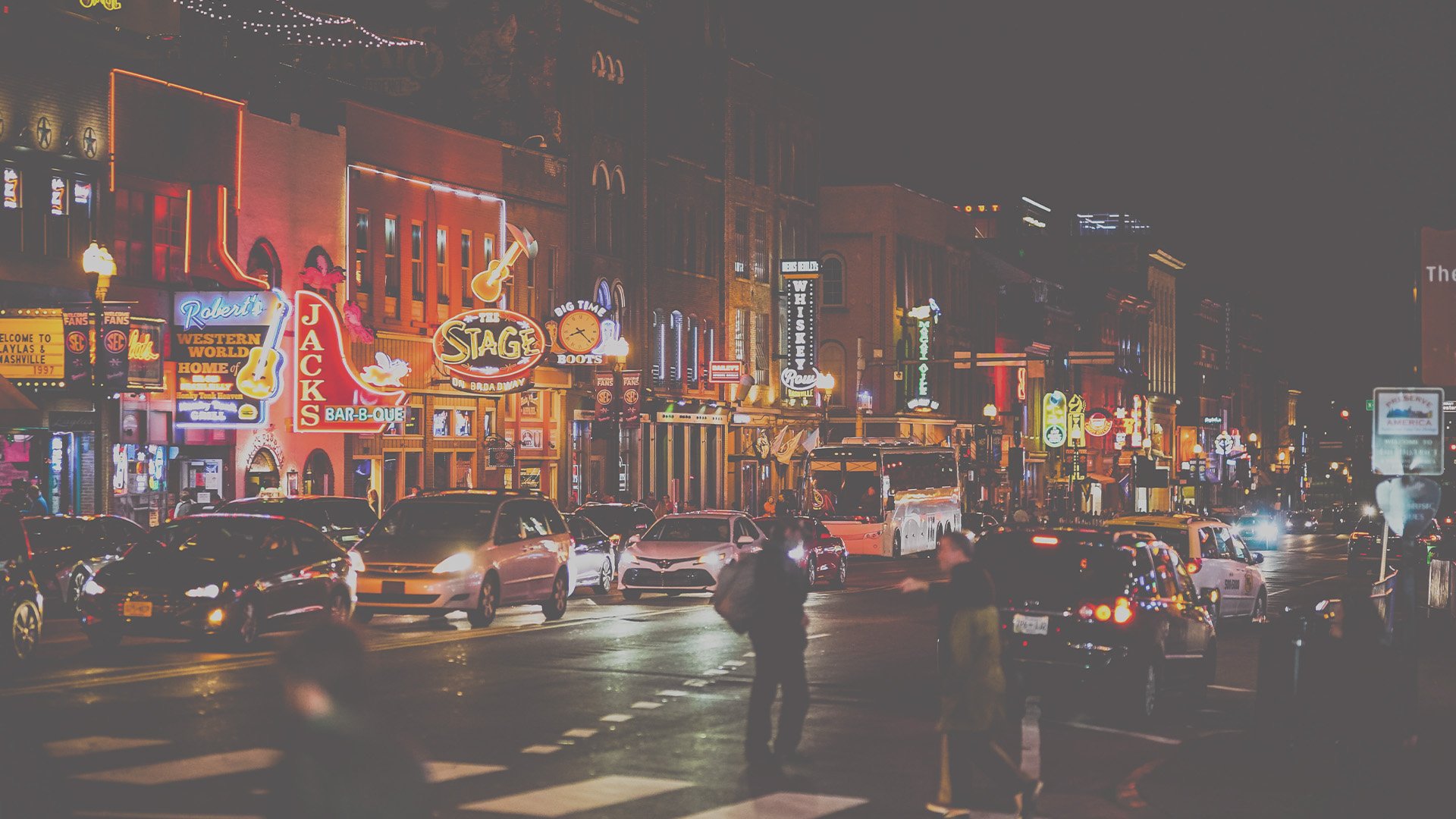
Buildings
From the historic brick buildings to the glowing neon signs to the Cumberland in the background, the view is quite beautiful.
Lower Broad is instantly recognizable in photos. From the historic brick buildings to the glowing neon signs to the Cumberland in the background, the view is quite beautiful. The chunk of the city was even listed in the National Register of Historic Places in 1980, cementing the unique brick buildings as a stalwart of old Nashville amidst its radical transformation. All of the buildings have stories no doubt, but there are a few iconic buildings worth exploring in detail.
Courtesy of the Williamson Source
Courtesy of Acme Feed and Seed
The is no building down there as iconic as Tootsie’s Orchid Lounge. The bright purple building can be seen from many blocks away, acting as a lighthouse of sorts guiding people to the bars. Tootsie’s is one of the oldest businesses still running on Lower Broad. The famed honky tonk got its start in 1960 when a somwan named Hattie Louise “Tootsie” Bess bought the building which was a bar called Mom’s. She hired a painter to spruce up the place, and to her surprise he chose a bright purple color. Bess decided to keep the color and from then on it was known as Tootsie’s Orchid Lounge. The bar originally thrived because of the Opry. There is a small alley between Tootsie’s and the Ryman, and performers and their significant others used to slip in to the bar. Bess died in 1978 but the bar continued to survive even with the decline of Lower Broad. The legacy of Bess lives on with her Wall of Fame and the iconic orchid purple paint.
As you walk towards the Cumberland there’s a white and red building right before you reach First Avenue. This building is known as the Acme Feed and Seed. One of the oldest buildings on Broadway, it was built in the 1890s. Many businesses have resided in this building from a baking powder manufactuer and buggy company, all of which were benefited by its location next to the river. The most important of its tenants was the Acme Feed and Hatchery which opened up in 1943 as a farm supply store. They had an interesting relationship with animals which they used for marketing. At on time they were hatching 4,000 chickens weekly. They sponsored a calf named Beautena who would come out on the stage of the Opry at the Ryman in between performances. They even gave pigs away as door prizes at their annual Purina pig jamborees. The family owned company changed their name to Acme Farm Supply in the 60s and continued to operate until their closure in the 90s. The building has since been reopened and repurposed as a unique multi-level venue. Each floor has a different theme which all pay homage to its original layout, and there is even a rooftop bar making it an authentic Broadway bar.
Right across the street from Acme there is a funky little building in front of the Hard Rock that doesn’t make a whole lot of sense. Currently, it uninterestingly serves as the Hard Rock gift shop, but it has a much more colorful history. It was built in the 1890s as a saloon to welcome the weary working men who arrived on riverboats. It was managed by a partner of the George Dickel Whisky Company who used the saloon to promote its product. The building is known as the Silver Dollar Saloon because the floor of the old ballroom is made of silver dollars. Prohibition led to the closure of the saloon, but the building has served multiple purposes over the years including an art gallery and the offices of the Metro Historical Commission. Although the saloon used to be the corner of quite a few adjoining buildings, they have all since been demolished leaving an oddly small building at the corner of Broadway and 2nd.
There are a couple of buildings on Lower Broad and 3rd Ave. that do not fit in with the architecture or theme. There are a couple of banks! One was a private institution called the American National Bank. It was started in 1883 which makes it older than many of the buildings on Broadway, and it has since been absorbed into larger banking corporations. But even more interesting, there was the Broadway National Bank across the street. That bank was started in 1910 and actually printed paper bank notes before the National Reserve system was created. It printed 9 different types and denominations of bills over its 26 year period. If you’re an eagle-eyed collector, you may even be able to spot some currency that was printed there!
Courtesy of Keith Dotson
Courtesy of Heritage Auctions
